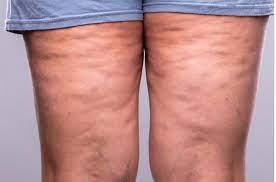Lipedema is a chronic medical condition characterized by an abnormal buildup of fat, primarily in the legs, hips, and sometimes arms. Despite its relatively high prevalence, it remains underdiagnosed and misunderstood. Experts estimate that about 11% of women globally may suffer from Lipedema. Understanding its symptoms and treatment options can help sufferers manage the condition effectively and improve quality of life.
Recognizing Key Symptoms of Lipedema
The most notable feature of lipedema is a disproportionate accumulation of fat in certain areas of the body, typically sparing the hands and feet. This often creates a distinct visual difference between the affected areas and the rest of the body.
Common Symptoms Include:
• Pain and Tenderness
•
Unlike typical weight gain, the fat tissue in lipedema is often painful or tender to the touch.
• Easily Bruising Skin
•
The skin in affected areas tends to bruise more easily, which can lead to discomfort.
• Swelling
•
Although it isn’t related to water retention, swelling in lipedema worsens throughout the day and may subside overnight.
• Limited Mobility Over Time
•
Individuals can also experience restricted movement as fat distribution worsens.
These symptoms usually worsen during hormonal changes such as puberty, pregnancy, or menopause. It’s critical to differentiate lipedema from obesity or lymphedema since its unique characteristics require specific approaches to management.
Treatment Options for Lipedema
Currently, there is no cure for lipedema, but there are several treatments that aim to reduce symptoms and improve individuals’ daily lives.
Management Techniques:
1. Decongestive Therapy
Manual lymphatic drainage (a form of specialized massage) combined with compression garments can improve circulation and reduce swelling.
2. Exercise and Low-Impact Workouts
While traditional weight loss methods don’t target lipedema fat, gentle exercises like swimming, walking, and cycling can support overall health and mobility.
3. Dietary Adjustments
Anti-inflammatory diets rich in whole, unprocessed foods may complement other treatments by reducing symptom flare-ups.
4. Liposuction
For severe cases, liposuction performed by specialized surgeons can remove abnormal fat deposits. This surgical option helps restore mobility and alleviate pain but is not a cure.
Understanding the condition’s progression and combining lifestyle changes with professional treatments is essential for managing lipedema effectively.
Take Control of Lipedema
Lipedema is far more than a cosmetic issue. Early identification and focused treatments play a key role in slowing its progression, improving comfort, and empowering those affected to lead fulfilling lives. Consulting with a healthcare professional familiar with this condition is the first step toward effective management.

